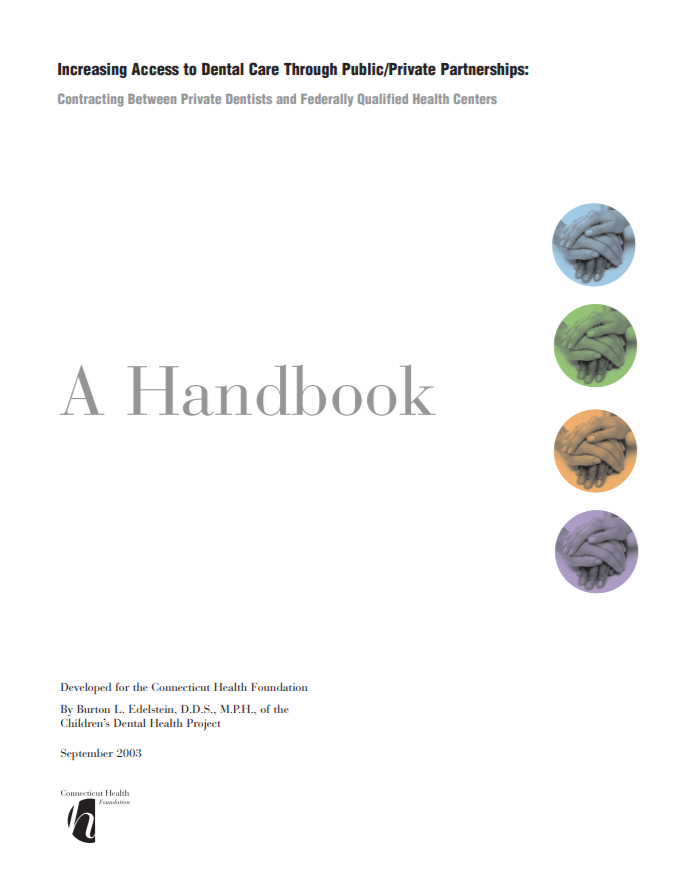In 2003, as part of a multi-stage strategy to improve access, the Connecticut Health Foundation commissioned the Children’s Dental Health Project (CDHP) to investigate strategies to improve access to dental services for underserved populations.
One such strategy of wide interest and potential application involves establishing contractual arrangements between Federally Qualified Health Centers (FQHCs) and health centers, and private-practice dentists for the purpose of providing dental services to health center patients, either in the dentists’ private offices or in designated areas within health center facilities.
There are many advantages to both the dentist and health center when they contract to provide care to health center patients:
- Dentists can provide services to Medicaid patients without necessarily registering as Medicaid providers
- They are relieved of most responsibility to bill FQHC patients or their insurers
- They can predetermine blocks of time, numbers of patients, or numbers of visits they wish to provide for care of the underserved
- They can answer the needs of those in their community who have the most need and least access to care.
For health centers, contracting allows them to:
- Meet their requirement that they provide dental services to their patients
- Reduce their need for expensive capitalization of dental facilities and equipment
- Reduce their direct staff costs
- Expand the number of available dental providers,
- Reduce the length of waiting times for patients to receive services
- May help make dental service costs more predictable.
This handbook is a guide for how health centers and dentists may approach a public/private partnership.
Author
- Burton L. Edelstein, D.D.S., M.P.H., of the Children’s Dental Health Project
